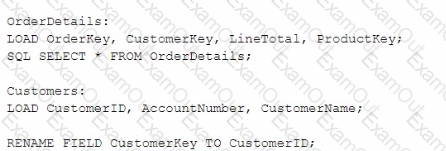Exhibit
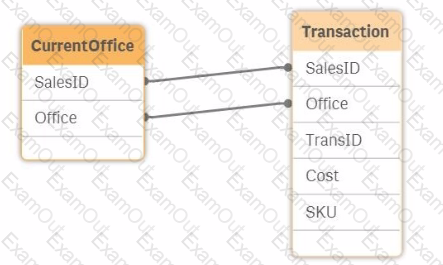
Refer to the exhibit.
The salesperson ID and the office to which the salesperson belongs is stored for each transaction. The data model also contains the current office for the salesperson. The current office of the salesperson and the office the salesperson was in when the transaction occurred must be visible. The current source table view of the model is shown. A data architect must resolve the synthetic key.
How should the data architect proceed?
Users of a published app report incomplete visualizations. The data architect checks the app multiple times and cannot replicate the error. The error affects only one team.
Which is the most likely cause?
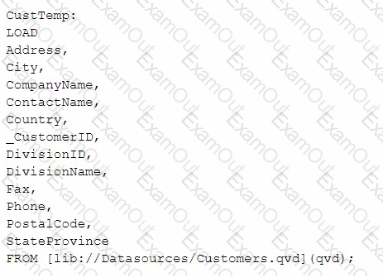
Refer to the exhibit.
A data architect needs to load data from Customers.qvd and sort the Country field in ascending order. Which method should be used?
Exhibit.
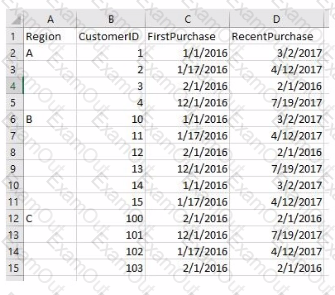
One of the data sources a data architect must add for a newly developed app is an Excel spreadsheet. The Region field only has values for the first record for the region. The data architect must perform a transformation so that each row contains the correct Region.
Which function should the data architect implement to resolve this issue?
A data architect receives an error while running script.
What will happen to the existing data model?
A startup company is about have its Initial Public Offering (IPO) on the New York Stock Exchange.
This startup company has used Qlik Sense for many years for data-based decision making for Sales and Marketing efforts, as well as for input into Financial Reporting. The startup's Qlik Sense applications use variables that have different values at different points in time.
Due to the increased rigor required in record keeping for public companies, these variables must be clearly recorded in the script reload logs of the Qlik Sense applications. These logs are refreshed daily.
The data architect wants to have the variables names, with their current values,writteninto the script reload logs. Which script statement should the data architect use?
Exhibit.
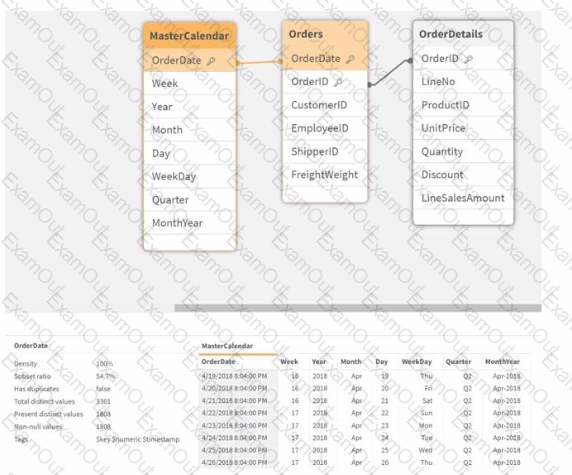
Refer to the exhibit.
A business analyst informs the data architect that not all analysis types over time show the expected data.
Instead they show very little data, if any.
Which Qlik script function should be used to resolve the issue in the data model?
A data architect needs to load Table_A from an Excel file and sort the data by Reld_2.
Which script should the data architect use?
A)

B)
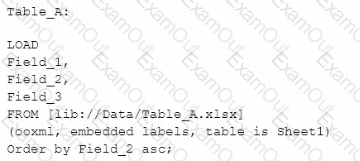
C)
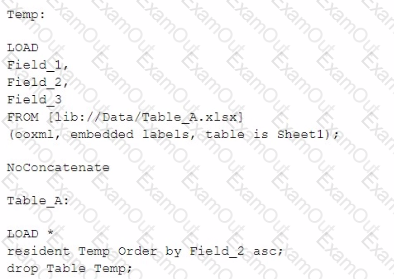
D)
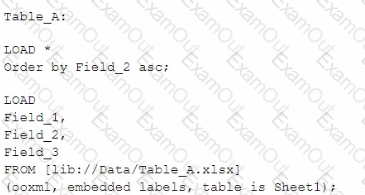
Exhibit.
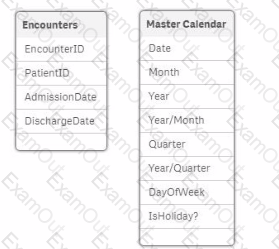
Refer to the exhibit.
A major healthcare organization requests a new app with the following requirements:
• Users can filter AdmissionDate and DischargeDate by all fields in the Master Calendar table
• Use an existing QVD file, which includes dates 20 years into the future
• Users should not be able to filter on dates that have no associated encounters
Which approach should the data architect take to meet these requirements?
Exhibit.
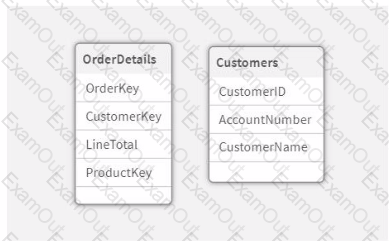
Refer to the exhibit.
A data architect is loading two tables into a data model from a SQL database. These tables are related on key fields CustomerlD and Customer Key.
Which script should the data architect use?
A)

B)

C)

D)
